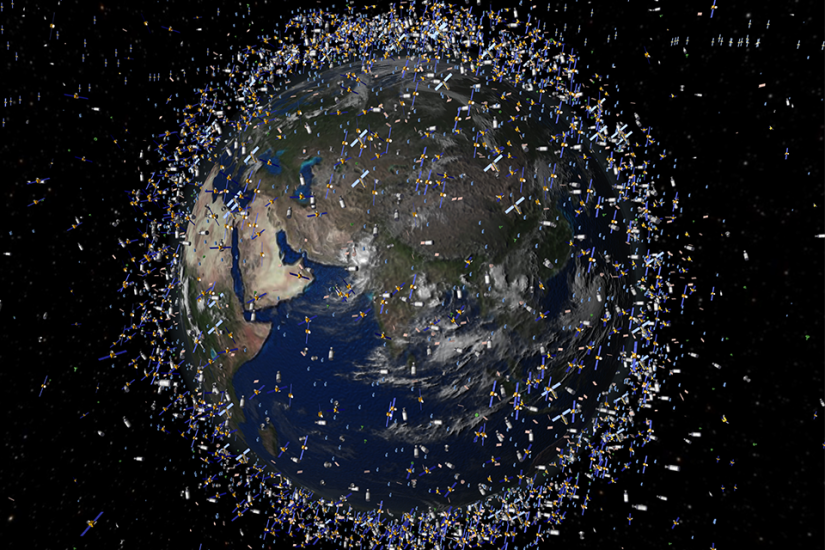UK Science Minister Andrew Griffith and Defence Procurement Minister James Cartlidge visited UK Space Command at RAF High Wycombe on 16 May to officially launch the National Space Operations Centre (NSpOC). The centre will use a global network of sensors to support space operations, with those on-site overseeing and delivering critical missions, from tracking an average of 20 to 30 objects re-entering the Earth’s atmosphere a month, to protecting the UK licensed satellites from collisions with space debris.
The NSpOC brings together almost 70 civilian and military personnel to protect the UK against space-related threats, risks and hazards. It fulfills a key commitment outlined in the government’s National Space Strategy, Defence Strategy, and the Space Industrial Plan that was published in March 2024. The centre is jointly funded by the Department for Science, Innovation and Technology (DSIT)/UK Space Agency and the Ministry of Defence with a GBP20 million investment and is in partnership with the Met Office.
“Space may be the ‘final frontier’, but we need to ensure sustainable access,” Griffith said. “The UK is one of the space faring nations whose pioneering efforts to track and remove hazardous space junk and well-designed space regulations have a key role to play.”
Alongside the NSpOC’s official launch, DSIT has published the Space Regulatory Review which establishes key regulatory priority areas for the UK’s space sector. Developed in collaboration with over 100 industry representatives, the report offers a unified regulatory roadmap for the future of the UK space sector and its space economy.
The report is designed to deliver clarity and certainty for the UK space sector, its investors, and the global space community by focusing on three core objectives: identifying regulatory gaps and opportunities; prioritising safety, security, and sustainability; and supporting government objectives to maintain UK leadership in modern space regulations.
“Without effective rules and oversight, there is an increased risk of endangerment to human life, accidents, collisions, and space debris proliferation, posing risks to satellites, spacecraft, and other objects in orbit,” the report states, adding that proportionate regulation can mitigate these risks while also supporting innovation.
Recent years have seen a significant increase in the number of satellites in orbit, as well as defunct rocket bodies, debris from in-orbit break-ups and even tools dropped by astronauts working in space. The Space regulatory Review notes that there are now 11,500 satellites in space, 9,000 of which are functioning. Over 35,000 debris objects are being tracked and catalogued by space surveillance and tracking networks. Not all objects can be tracked however, and the report continues that statistical models put the number of pieces of debris larger than 1mm at 130 million.
Large constellations are being launched into space that deliver global connectivity to communities and locations where ground infrastructure cannot reach. However, there is increased potential for debris creation from such launches and operational activities. The report says innovations like these need to be managed carefully and steps should be taken to accommodate and protect the opportunities they deliver, whilst mitigating any impact on the space traffic environment.
For more information
Department for Science, Innovation and Technology
Image: European Space Agency




